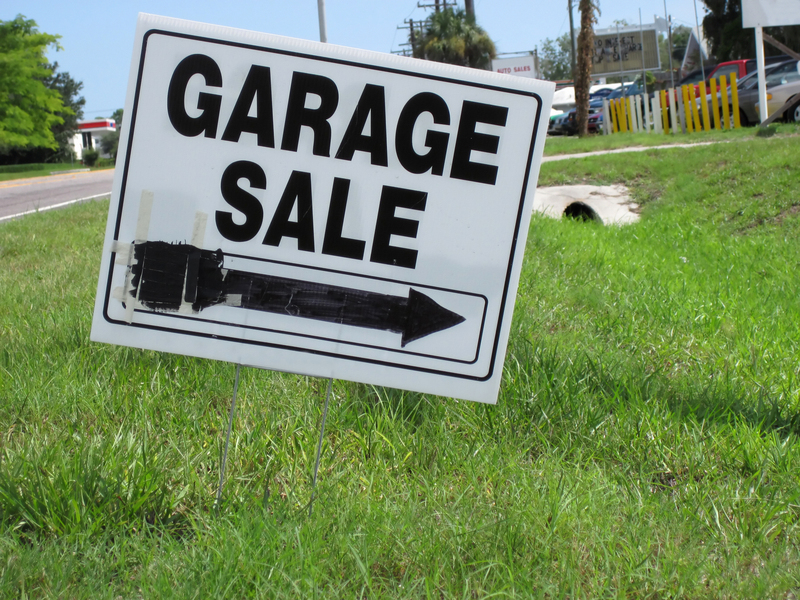Master the Art of Saving with Bulky Waste Items
Have you ever looked at old furniture, broken appliances, or construction leftovers and thought only of throwing them away? Discover how you can turn these bulky waste items into smart savings, eco-friendly projects, and creative transformations. Learn to master the art of saving with bulky waste items and unlock new value in what others discard.

Understanding Bulky Waste: What Does It Include?
Before you can save money with bulky waste items, it's important to clarify what counts as 'bulky waste.' Bulky waste refers to large, unwanted items that aren't easily disposed of in standard trash collections. Typical examples include:
- Old sofas, beds, and other furniture
- Broken or outdated household appliances (e.g., refrigerators, washing machines)
- Large electronics (televisions, monitors)
- Bathroom fittings (bathtubs, sinks, toilets)
- Building construction debris
- Garden waste (fences, garden sheds)
Bulky waste disposal often incurs significant charges, especially when handled via municipal services or private haulage. However, you can turn these waste items into savings, either by reuse, upcycling, or conscientious disposal methods.
The Real Costs of Bulky Waste Disposal
Let's first consider the average costs associated with getting rid of large, unwanted items:
- Many cities impose hefty fees for landfill disposal or curbside pickup of bulky items.
- Private junk removal services generally charge by the volume or weight of the items.
- Improper disposal can lead to fines and environmental damage.
This means if you frequently upgrade furniture or appliances, bulky waste management can easily become a substantial household or business expenditure. But with the right approach, you can save money with bulky waste disposal alternatives - and even generate value!
Top Strategies to Save with Bulky Waste Items
1. Repurpose and Upcycle Bulky Waste
One person's trash is another's treasure. Repurposing and upcycling are fundamental ways to master the art of saving with bulky waste items. Here are some creative ideas:
- Old Doors and Windows: Use them as vintage table tops, headboards, or garden features.
- Wooden Pallets: Turn them into outdoor furniture, compost bins, or plant stands.
- Bathtubs: Repurpose as garden planters or quirky outdoor seating.
- Broken Appliances: Harvest motors and metals for DIY projects or scrap value.
- Large Cardboard: Use for mulching in gardens or as moving materials.
Tip: Search online for DIY upcycling ideas--that outdated dresser could become your next bookshelf or a children's play kitchen!
2. Donate Bulky Items
Charities and non-profit organizations are often looking for usable furniture and appliances. Donating not only helps those in need, but also saves you the cost of disposal, and may provide a tax deduction.
- Contact local shelters, community centers, or churches.
- Some charities offer free collection of bulky waste items if they're in good condition.
3. Sell or Give Away for Free
Another excellent way to reduce bulky waste disposal costs and potentially earn back some money is by selling or giving away items:
- Online marketplaces: List items on sites like Craigslist, Facebook Marketplace, or eBay.
- Freecycle or neighborhood groups: Offer items to neighbors who might need spare parts or furniture.
- Garage sales or community swaps: These are great for moving larger items without transport hassles.
Quick Tip: Take clear photos, provide honest descriptions, and stay responsive to inquiries for faster results.
4. Salvage for Scrap Value
Not all bulky waste is suitable for reuse in its current form, but many items contain valuable recyclable materials such as metal, copper, and aluminum.
- Appliance recycling: Old fridges, stoves, and washing machines often contain steel and copper that can be sold to scrap yards.
- Electronics: TVs and computers have circuit boards, wiring, and rare metals.
- Metal frames: Bed frames, patio furniture, and other items made largely of metal can be sold for scrap.
Research your local area's scrap metal prices--sometimes, the value can surprise you! This makes saving with bulky waste items even more attractive.
5. Hire a Responsible Bulky Waste Removal Service
If DIY disposal isn't feasible, look for removal companies that emphasize environmentally responsible bulky waste management. Many such services recycle or resell a significant percentage of collected items, reducing landfill use and potentially costing less than traditional services.
- Ask about their recycling rates and processes.
- Compare costs with city bulk waste pickup; independent services may compete on price and efficiency.
Environmental Benefits: Save More than Just Money
By maximizing bulky waste savings, you're not just protecting your wallet. You're also contributing to a healthier planet:
- Reduced landfill waste: Less bulk in landfills means fewer emissions and a cleaner environment.
- Resource conservation: Recycling metals, wood, and plastics conserves natural resources and energy.
- Lower pollution: Proper disposal prevents hazardous materials from contaminating soil and water.
- Boosts local economies: Donated and recycled items generate jobs and support community projects.
Saving with bulky waste items is a win-win for your budget and the environment!
Bulky Waste Savings for Businesses and Property Managers
For businesses, organizations, and landlords, bulk waste management often involves large-scale disposal from office renovations, tenant move-outs, or construction. Here's how to master the art of savings with bulk waste on a bigger scale:
- Establish a recycling partnership: Set up collaborations with local recycling centers or charities.
- Bulk sales for scrap: Sell large quantities of metal, wood, or appliances directly to dealers.
- Schedule regular donation days: Coordinate with organizations for periodic pickups.
- Use smart inventory management: Minimize wasted resources by repurposing furniture internally or offering to employees first.
- Negotiate competitive disposal contracts: Group multiple units or items together for better pricing.
Tip: Clearly label and segregate reusable, recyclable, and waste items to maximize return and minimize costs.
Step-by-Step Plan: Master Your Bulky Waste Savings
- Audit your waste: List all large items destined for disposal and note their condition.
- Research options: Search for local donation, recycling, and resale opportunities by item type.
- Contact removal services if needed: Request quotes and ask about sustainability commitments.
- Prioritize reuse and resale: Always attempt to repurpose or sell before options that cost you money.
- Document your savings: Track avoided disposal fees and any income from recycled or resold items.
With practice, you can master the art of saving with bulky waste and build a system that keeps costs low and benefits high!
Common Mistakes to Avoid with Bulky Waste
Even the most eco-conscious can stumble. Watch out for these pitfalls when managing your bulky waste:
- Illegal dumping: Always use approved channels. Illegal disposal can result in hefty fines and environmental harm.
- Missing recycling value: Don't overlook the scrap value of old appliances or metal items.
- Skipping donation opportunities: Many organizations accept used but functional items you might assume are worthless.
- Underestimating transport costs: Renting a van just to move one item might negate potential savings. Try to bundle items or seek local pickup services.
- Poor storage: If you can't immediately reuse, sell, or donate, store items safely to avoid further damage or value loss.

Innovative Examples: Mastering Bulky Waste Savings
Case Study #1: Turning Doors into Desks
A small business with a surplus of office doors converted them into collaborative workbenches--saving on buying new furniture and reducing disposal costs.
Case Study #2: Profitable Scrap Metal from Renovations
A landlord collected old radiators, pipes, and bed frames during apartment renovations. After delivering them to a local scrap dealer, the proceeds offset much of the renovation waste removal expense.
Case Study #3: Non-Profit Donation Drives
A church partnered with a used furniture charity to collect members' unwanted bulky goods. This supported families in need and reduced landfill burden.
Frequently Asked Questions about Saving with Bulky Waste
How Can I Find Who Will Collect or Take My Bulky Waste Items for Free?
Search for "bulky waste pickup free near me" or check with local charities and community groups. Many municipalities offer occasional free collections or can direct you to organizations in need of specific items.
What If My Bulky Waste Is Damaged or Broken?
Even damaged items may have value as parts or scrap. Contact local recycling centers or post them for free pickup--often, hobbyists or repair shops will claim them.
Can I Save with Bulky Waste If I Live in an Apartment?
Yes! Many apartment management offices organize regular collection days or may partner with removal services. Consider reaching out to neighbors for group pickups to save money on bulky waste disposal costs.
Start Saving with Your Bulky Waste Today!
Don't let large, unwanted items drain your budget--or the planet's resources. You have the power to save by rethinking and repurposing your bulky waste items. Whether you upcycle, donate, sell, or recycle, every effort can help reduce costs and support sustainable living.
Begin your journey to master the art of saving with bulky waste items now--your wallet and the environment will thank you!